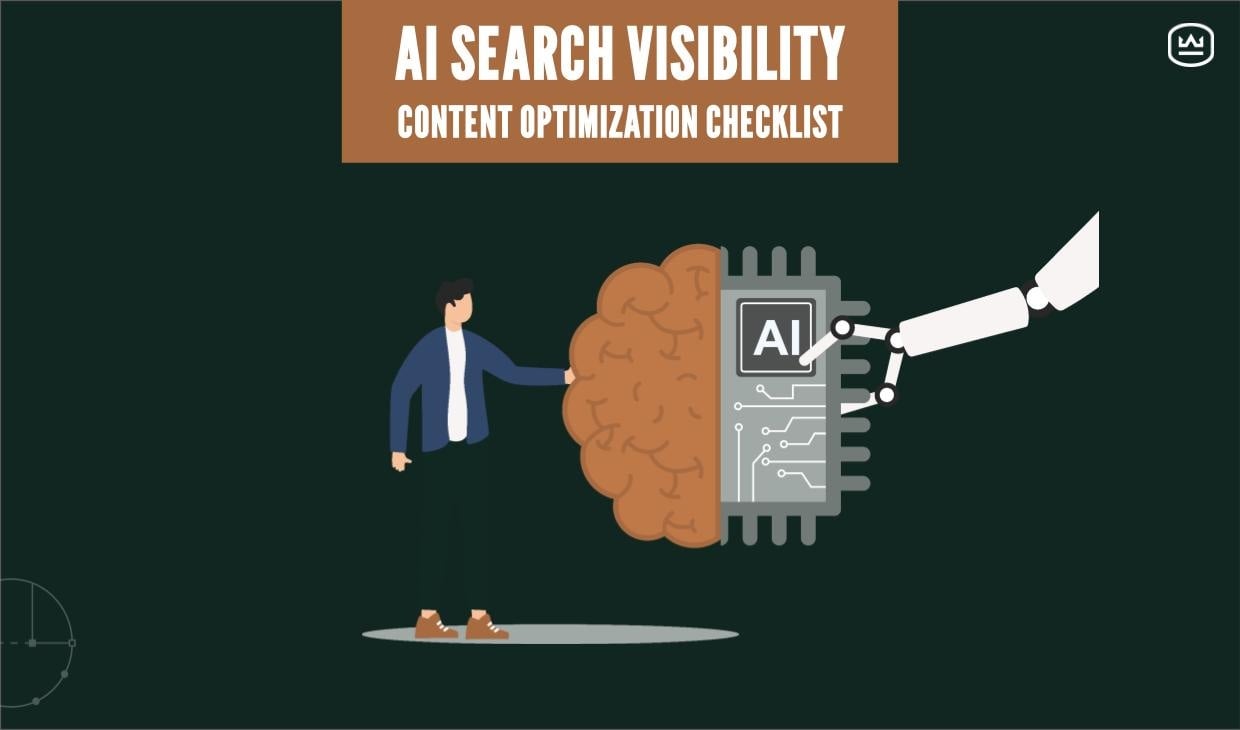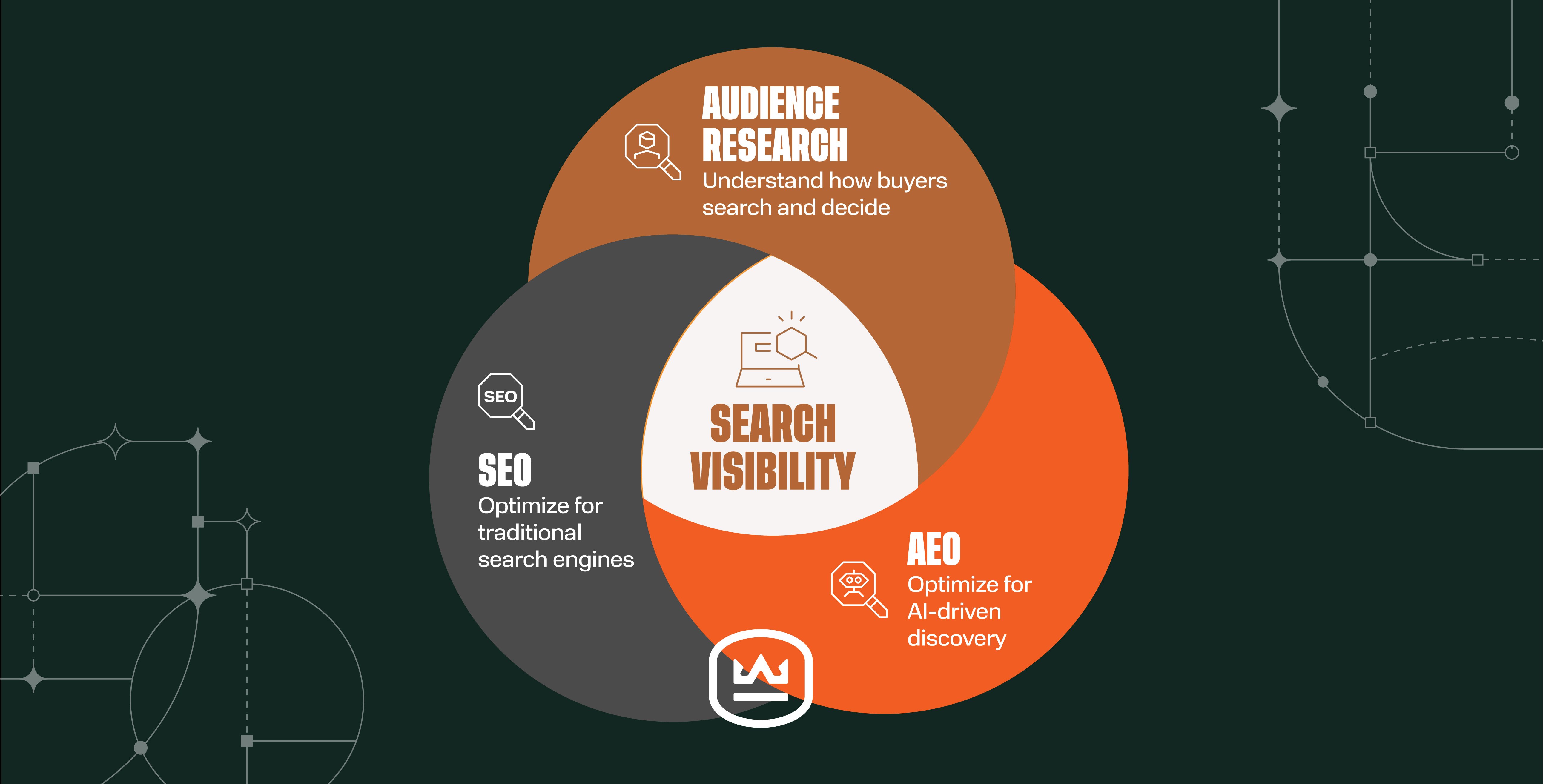Do Today’s Buyers Even Need Sales? How B2B Buying Processes Have Changed
Written by
Bad news salespeople—just like the teenager/parent relationship, the modern B2B buyer doesn’t need you...well, at least until they decide they need you. And when that all-important moment occurs, it’s definitely on their terms—so you best be ready to meet them at their time of need.
Unlike stereotypical teens, however, B2B decision-makers are much more rational beings. They plan ahead. They do their homework. They have initiative. They take notes. They look for solutions. They pick up their rooms.
Let’s take a closer look at how these buyers conduct business and what the subsequent implications are for B2B companies’ marketing and sales initiatives.
1. Buyers are Taking the Lead
What’s the first step in the B2B buying process for primary decision-makers, internal influencers, and researchers in a company? More than 40% said they conduct anonymous research for relevant content that speaks directly to their company and industry, according to DemandGen’s 2021 B2B Buyers Survey.
These activities occur long before engaging with any particular brand and, by the time they do get to your site, many are well down the path toward making a decision about what they need and want. When they reach out to a company, they’ve already acquired a lot of knowledge about their products and services, meaning they’ll be less dependent on a stereotypical “sales pitch” during the buying process.
2. Buyers are Researching Longer
The sales cycle for many B2B purchases can be long, spanning weeks or months, and the time to research potential purchases has only gotten longer. According to DemandGen, research shows more than half of B2B buyers say that the length of their purchase timeline increased compared to a year ago, with one in five saying it increased significantly.
Buyers are conducting more in-depth ROI analysis, and the number of people involved in the B2B buying process is larger, which means more information is required along with more time to review it. The same report noted that easy access to relevant content, pricing/competitor information, and content that demonstrated industry knowledge were the top three factors influencing the effectiveness of potential buyers’ experiences once they engaged with a solution provider on their website.
3. Buyers Want Video
While you may not immediately think video is a big part of the B2B buying process, it’s actually a vital part of research at both the awareness stage and the consideration stage. Consider that 68% of YouTube users watched YouTube to help make a buying decision, and 83% of video marketers say video has helped them generate leads.
Perhaps that’s why approximately four in 10 B2B organizations plan to invest in and increase their use of video marketing this year.
Need ideas of what to talk about in your videos? Here’s a bunch: How to Use 10 Types of Video Marketing for B2B
4. When Buyers are Ready to Talk, They’re Ready to Talk
Given the amount of time spent doing research, when buyers are ready to talk to a sales rep, they’re really ready to talk. Now. Buyers expect speedy, helpful service and response times and consider these factors a must-have when choosing a vendor. The ways that attentive service is provided has changed, however. The pandemic shifted how people buy, sell, and serve, with an increase in online chat, marketing automation, and video conferencing.
Sales models are changing as a result, too, with 57% of sales leaders adopting a remote or hybrid sales model. Despite some sales leaders going into panic mode last year when they couldn’t make in-person sales calls, 63% of them now believe that virtual meetings are just as or more effective than in-person meetings. Leaders are doubling down on improving digital buying channels, like chat and video conferencing.
Read Our Complete Guide to Inbound Sales for Manufacturing
Implications for Sales & Marketing
1. Sales Must Have a Consultative Mindset
Because buyers enter the sales funnel much later due to the volume of research they’re conducting, salespeople need to be ready to handle a more well-informed customer. As such, the traditional initial buyer and salesperson interaction becomes obsolete.
These are just some of the skills a successful salesperson needs to have today:
- Embrace technology
- Share new ideas
- Exhibit business acumen
- Communicate effectively
- Seek collaboration
- Leverage data
The buyer is in a more powerful position and is the one driving the conversation to get the information they need. Consequently, sales has to have a different mindset. They must be truly prepared to listen and have much more in-depth knowledge about what they’re selling, and they must be skilled at showing how it aligns with customers’ needs within the industries in which they work.
Sales teams also may need to get a bit more creative in terms of how they communicate with customers and how they wrangle the information they want out of the buyer — things related to timelines, buying authority, etc., as their needs will come second to those of the buyer.
2. Provide Content That Reaches Your Intended Audience
Both sales and marketing need to be prepared to teach and find ways to help buyers decode and process all the information they need to make a decision. This means:
- Making shared information extremely relevant to customers’ unique needs. Personalization is especially crucial in the purchase process. When researching potential products, for example, buyers overwhelmingly gravitate toward companies that demonstrate “a stronger knowledge of our company and its needs.” In other words, B2B buyers are asking “What can your solution do for me?” and “How can I be sure it’s the right fit for my business?” If you’re going to earn buyers’ trust, you need to show them you understand their problems and the issues they’re trying to solve.
- Being upfront and transparent. This means providing easy access to pricing basics and competitive information on your website, as well as making it abundantly clear who the ideal users/purchasers of the product are. This helps weed out unqualified leads.
- Using video as part of a content strategy. Given its use and importance in the research process, marketers need to produce video content that helps buyers learn about what you offer, see how it works in the field, and compare options and other methods.
Check out our complete Video Marketing Resource Library
3. Don’t Forget the Basics
While there are some B2B sales processes that have evolved, it’s important to remember that some basic inbound principles always ring true:
- Don’t rely solely on personas. Personas are awesome for helping guide your B2B marketing content and providing focus, but they only provide you with some guided assumptions about customer needs. To more fully understand what customers’ needs are, you should have some direct interaction with them through customer interviews and honest, transparent conversations.
- Talk to real, specific customers. While you probably can’t go all Undercover Boss on your customers, you do have to talk to them in order to find out what’s causing them pain. Schedule an interview call with them, visit their location, and take a plant tour to gauge what they’re dealing with on a daily basis.
- Tune into metrics. Metrics provide insights into actual customer actions, which can inform future conversations. You can also cross-reference metrics with your customer conversations to get a sense of whether their words and actions align.
- Review your competitors. Analyze your competitors’ websites, content, marketing efforts, etc. It’s always a good idea to understand what they see as being customers’ needs and how what they offer compares to what you offer, and how to address potential gaps.
Ultimately, all these B2B buying behavior trends point toward the need to reduce friction in the sales cycle. Leveraging inbound sales, marketing, and service is one of the best ways to keep the momentum in your sales flywheel going. Download this Flywheel Overview & Workbook for an easy-to-use resource, and start offering the knowledge your next customers are waiting for!
Subscribe To Our Blog
Information. Insights. Ideas. Get notified every time a new Weidert Group blog article is published – subscribe now!
You May Also Like...

Search Engine Optimization
How Falcon Rebuilt Industrial AI Search Visibility in 2025

Search Engine Optimization
The New Search Visibility Checklist for AI-Era Content Marketing

Search Engine Optimization
SEO Isn’t Dead. It’s Evolving: How B2Bs Can Stay Visible in the Age of AI
Accelerate Your Growth with
Weidert Group
If you’re ready to explore a partnership, request a personalized consultation with our team.

